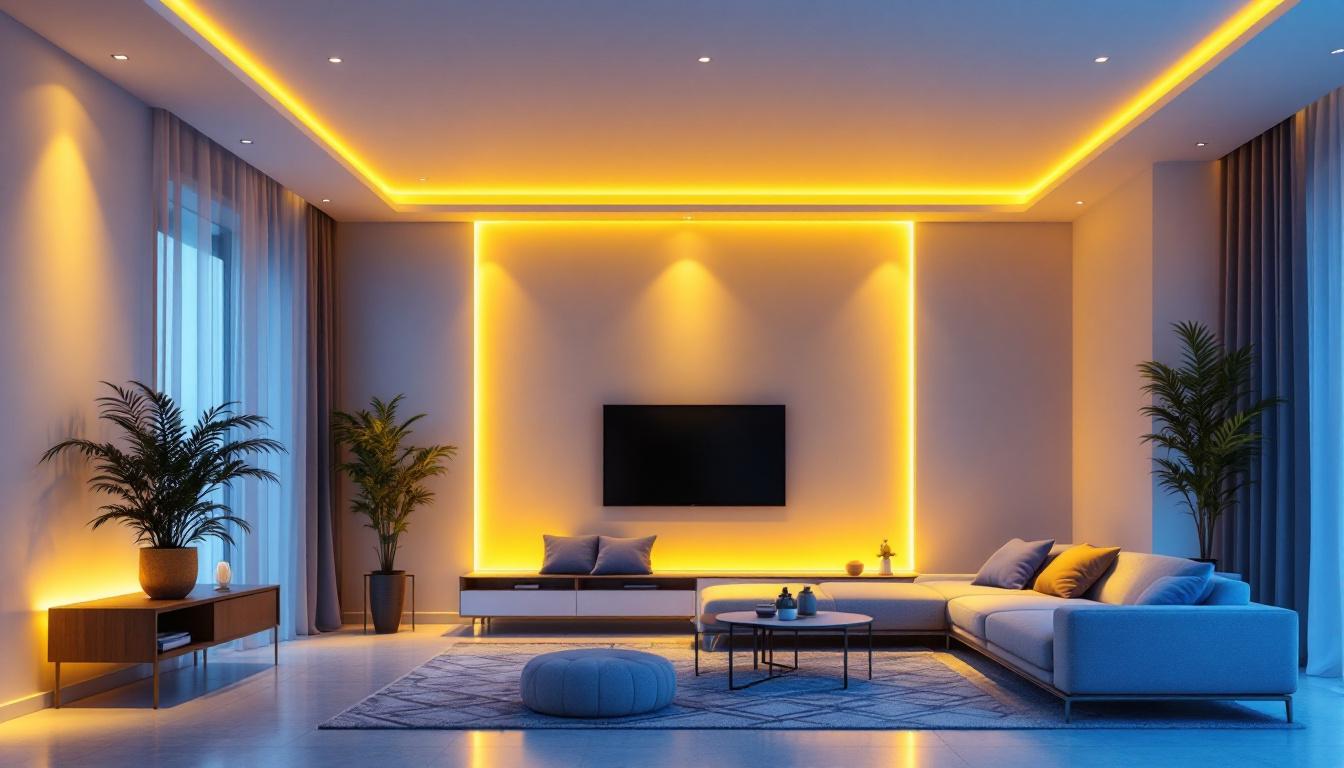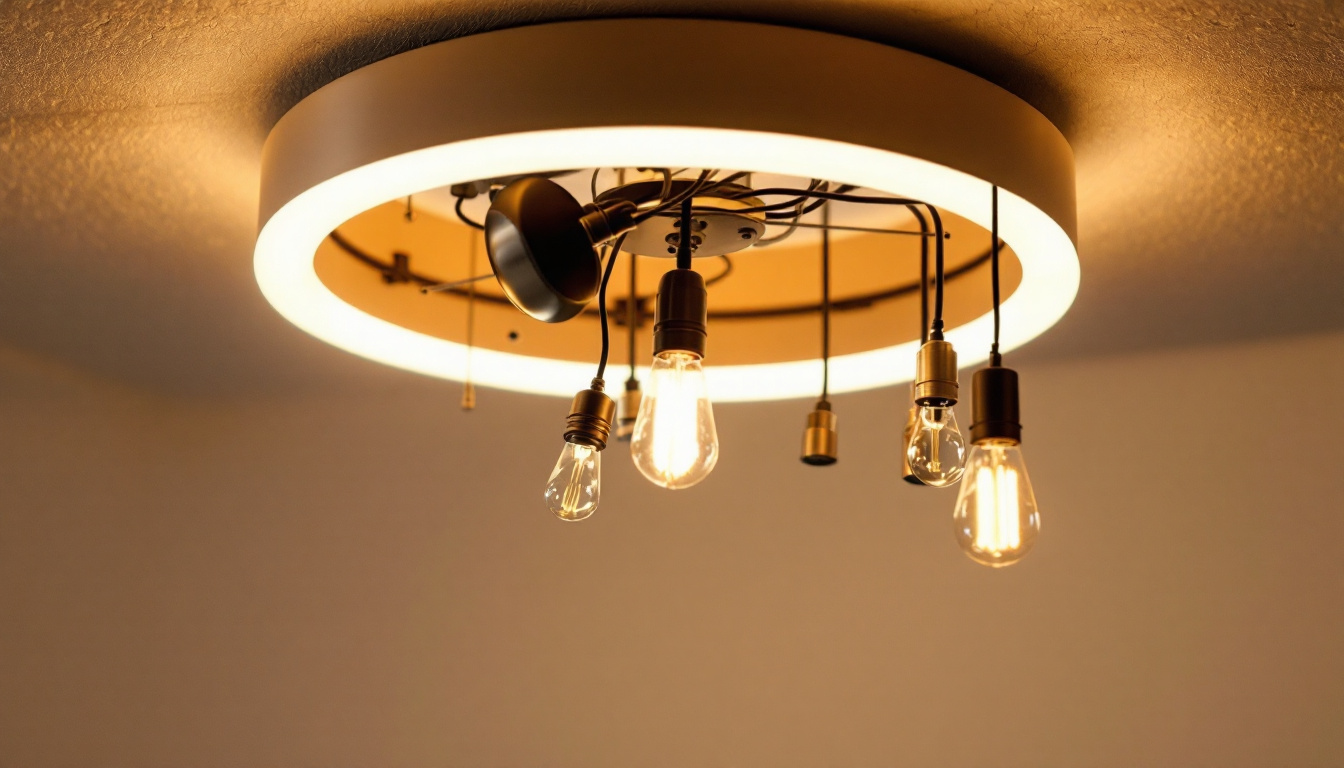
Recessed lighting has become a staple in modern interior design, offering a sleek and unobtrusive way to illuminate spaces. For lighting contractors, understanding the science behind contemporary recessed lighting is essential for delivering optimal results. This article delves into the intricacies of recessed lighting, exploring its components, design considerations, and the latest technologies that are shaping the industry.
Recessed lighting, often referred to as can lights or pot lights, is a type of lighting fixture that is installed into a hollow opening in the ceiling. This design allows the light to be directed downward or at specific angles, providing a clean and modern aesthetic. Unlike traditional light fixtures, recessed lights do not protrude from the ceiling, making them ideal for spaces with low ceilings or where a minimalist look is desired.
The fixtures themselves consist of three main components: the housing, the trim, and the bulb. The housing is the part that is mounted in the ceiling and contains the electrical components. The trim is the visible part of the fixture that can vary in style and finish, while the bulb provides the actual light output. Understanding these components is crucial for lighting contractors when selecting the right products for their projects. Additionally, the choice of bulb can significantly influence the ambiance of a room, with options ranging from warm white to cool daylight tones, each creating a different mood and atmosphere.
There are several types of recessed lighting fixtures available, each designed for specific applications. The most common types include:
Choosing the right type of fixture is essential for achieving the desired lighting effect and ensuring compliance with building codes. Moreover, it is important to consider the placement of recessed lights to maximize their effectiveness. For instance, spacing them appropriately can prevent dark spots and ensure even illumination across a room. A common rule of thumb is to place fixtures approximately 4 to 6 feet apart, but this can vary based on the height of the ceiling and the wattage of the bulbs used. Additionally, dimmer switches can enhance the versatility of recessed lighting, allowing homeowners to adjust the brightness according to the time of day or the mood they wish to create.
For lighting contractors, grasping the difference between lumens and watts is fundamental. Lumens measure the amount of light emitted by a bulb, while watts indicate the energy consumed by the bulb. In contemporary lighting design, the focus has shifted from watts to lumens, as energy-efficient LED bulbs provide significantly more light output per watt compared to traditional incandescent bulbs.
This shift emphasizes the importance of selecting fixtures based on their lumen output rather than wattage. For instance, a 10-watt LED bulb can produce the same amount of light as a 60-watt incandescent bulb, allowing for greater energy savings and reduced operational costs. Additionally, this transition to LED technology has not only revolutionized energy consumption but has also led to advancements in lighting design, enabling more creative and versatile applications in both residential and commercial settings. With the ability to produce a wide range of colors and effects, modern lighting solutions can transform spaces, enhancing their functionality and aesthetic appeal.
Color temperature, measured in Kelvin (K), plays a crucial role in the ambiance of a space. Recessed lighting can come in a range of color temperatures, from warm white (2700K) to cool daylight (5000K). Understanding the psychological effects of different color temperatures is essential for lighting contractors, as it influences how a space feels.
Warm white lighting creates a cozy and inviting atmosphere, making it suitable for living rooms and bedrooms. In contrast, cooler temperatures are ideal for workspaces, kitchens, and bathrooms, where clarity and focus are paramount. Selecting the appropriate color temperature can enhance the functionality and aesthetic appeal of a space. Moreover, the use of tunable white lighting systems allows for dynamic adjustments throughout the day, mimicking natural daylight patterns. This not only promotes well-being and productivity but also aligns with the growing trend of biophilic design, which seeks to connect occupants with nature through thoughtful lighting choices. By leveraging these advancements, contractors can create environments that are not only visually appealing but also conducive to health and happiness.
Effective recessed lighting design requires careful consideration of fixture placement and spacing. A common rule of thumb is to space recessed lights approximately 4 to 6 feet apart, depending on the height of the ceiling and the desired light intensity. For higher ceilings, fixtures may need to be spaced further apart to achieve even illumination.
Additionally, the placement of recessed lights should consider the room’s layout and purpose. In living areas, lights can be positioned to create layers of light, while in kitchens, task lighting should be prioritized over ambient lighting. Proper planning ensures that the lighting meets both aesthetic and functional needs.
Integrating dimmer switches and control systems into recessed lighting designs can greatly enhance the versatility of a space. Dimming capabilities allow users to adjust the light intensity based on time of day or activity, promoting energy efficiency and comfort.
Smart lighting systems have also gained popularity, enabling contractors to offer clients advanced control options through mobile apps or voice commands. These systems can be programmed to create specific lighting scenes, enhancing the overall user experience and making spaces more adaptable to various needs.
LED technology has revolutionized the lighting industry, providing a more energy-efficient alternative to traditional incandescent and fluorescent bulbs. LEDs consume significantly less energy while offering longer lifespans, making them a sustainable choice for recessed lighting.
For lighting contractors, incorporating LED fixtures into designs not only meets energy efficiency standards but also appeals to environmentally conscious clients. Additionally, many regions offer incentives for using energy-efficient lighting, providing further financial benefits for both contractors and homeowners.
Understanding and adhering to local building codes and regulations is vital for lighting contractors. Many jurisdictions have specific requirements regarding energy efficiency, especially in new construction. Familiarity with these codes ensures that recessed lighting installations are compliant, reducing the risk of costly modifications or penalties.
Contractors should stay informed about changes in regulations and advancements in technology to provide clients with the most up-to-date solutions. This knowledge not only enhances credibility but also positions contractors as industry leaders in sustainable lighting practices.
The rise of smart home technology has significantly impacted the recessed lighting market. Homeowners are increasingly seeking integrated lighting solutions that can be controlled remotely or automated. Lighting contractors should be prepared to offer smart recessed lighting options that can seamlessly connect with other home automation systems.
These systems allow for enhanced control over lighting schedules, energy usage, and even mood settings. By understanding the latest smart technologies, contractors can provide tailored solutions that meet the evolving needs of their clients.
Architectural lighting design is becoming more prominent in contemporary recessed lighting applications. This approach focuses on using light to enhance the architectural features of a space, creating visual interest and depth.
Lighting contractors should consider how recessed fixtures can be used to accentuate walls, ceilings, and other architectural elements. By collaborating with architects and interior designers, contractors can create cohesive lighting plans that elevate the overall design of a space.
Safety is paramount when installing recessed lighting. Contractors must ensure that all electrical connections are secure and comply with local codes. Proper insulation and ventilation around fixtures are also crucial to prevent overheating and potential fire hazards.
Using the right tools and equipment is essential for achieving a safe and professional installation. Contractors should invest in quality tools and stay updated on best practices to minimize risks and enhance overall efficiency during installations.
After installation, thorough testing of recessed lighting systems is critical to ensure optimal performance. Contractors should check for even light distribution, flickering, and any issues with dimming capabilities. Quality assurance not only guarantees client satisfaction but also helps identify potential problems before they escalate.
Providing clients with a demonstration of the lighting system can enhance their understanding and appreciation of the installation. This step fosters trust and reinforces the contractor’s commitment to quality workmanship.
Contemporary recessed lighting is a dynamic field that combines aesthetics, technology, and science. For lighting contractors, understanding the intricacies of recessed lighting—from fixture types and design considerations to energy efficiency and installation best practices—is essential for delivering exceptional results.
As the industry continues to evolve, staying informed about the latest trends and technologies will empower contractors to meet the diverse needs of their clients. By embracing innovation and prioritizing quality, lighting contractors can position themselves as leaders in the field of recessed lighting, ensuring their projects shine brightly for years to come.
Ready to elevate your lighting projects with the latest in recessed lighting technology? At LumenWholesale, we provide lighting contractors with the highest quality, spec-grade lighting products at unbeatable wholesale prices. Say goodbye to local distributor markups and hello to a vast selection of reliable, high-performance lighting that meets the highest industry standards. Plus, with free shipping on bulk orders, you can ensure your projects shine without the burden of hidden fees or compromises. Discover the perfect blend of quality, affordability, and convenience. Visit LumenWholesale today for Wholesale Lighting at the Best Value, and let us help you make your lighting visions a reality.

Explore the fascinating journey of ceiling light parts and their evolution in the lighting industry.

Discover expert insights and best practices for installing and maintaining light LED tubes in this comprehensive guide tailored for lighting contractors.

Discover the best discount codes for Lightbulbs Com and explore alternative options for lighting contractors.

Discover essential tips and strategies for lighting contractors to prevent common pitfalls in shop lighting projects.